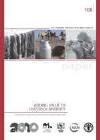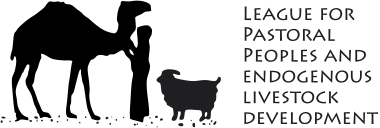Consultations on camels and biocultural protocols

LPP is co-organizing two meetings in Jaisalmer, Rajasthan, India, on 24 and 25 February 2010 to discuss the future of livestock keepers.
National Consultation for Saving the Camel, 24 February
Organized by Lokhit Pashu-Palak Sansthan and the Jaisalmer Camel Development Society. Government, private enterprise, NGOs, scientists, camel lovers and all who feel concerned are cordially invtied to discussions, brainstorming, camel competitions and camel product demonstrations.
Biocultural Community Protocols for Livestock Keepers, 25 February
Biocultural protocols are a new method of documenting livestock keepers’ contribution to maintaining breeds and conserving the environment. Organized by LIFE Network India, the Rain-fed Livestock Network, and Lokhit Pashu-Palak Sansthan, this meeting is an opportunity to share experiences with the development of biocultural protocols, identify the potential and pitfalls, and better understand their implications for local livestock keepers.
Stunning images of camels

Australian photographer Tim Cushan visited Rajasthan to photograph camels in India’s desert state. He was hosted by LPP’s Ilse Koehler-Rollefson and Hanwant Singh of Lokhit Pashu-Palak Sansthan. See his beautiful photo essay here.
Adding value to livestock diversity: Marketing to promote local breeds and improve livelihoods

Many local livestock breeds and minor species are in decline and may be lost because they cannot compete with high-yielding exotic breeds. Conserving these breeds is important: many have unique traits, such as hardiness and disease resistance, that are vital for future livestock production. One way to help ensure their survival may be to sell products from these breeds to high-value, specialist markets.
This publication by LPP and its partners describes eight examples of marketing of livestock products (wool, cashmere, milk, meat and hides) from local breeds of Bactrian camels, dromedaries, goats and sheep in seven countries in Africa, Asia and Latin America. It shows how they have kept local breeds in use, while enabling the small-scale livestock keepers and pastoralists who raise them to improve their livelihoods.
- Go to the previous page
- 1
- …
- 42
- 43
- 44
- 45
- 46
- 47
- 48
- …
- 76
- Go to the next page
